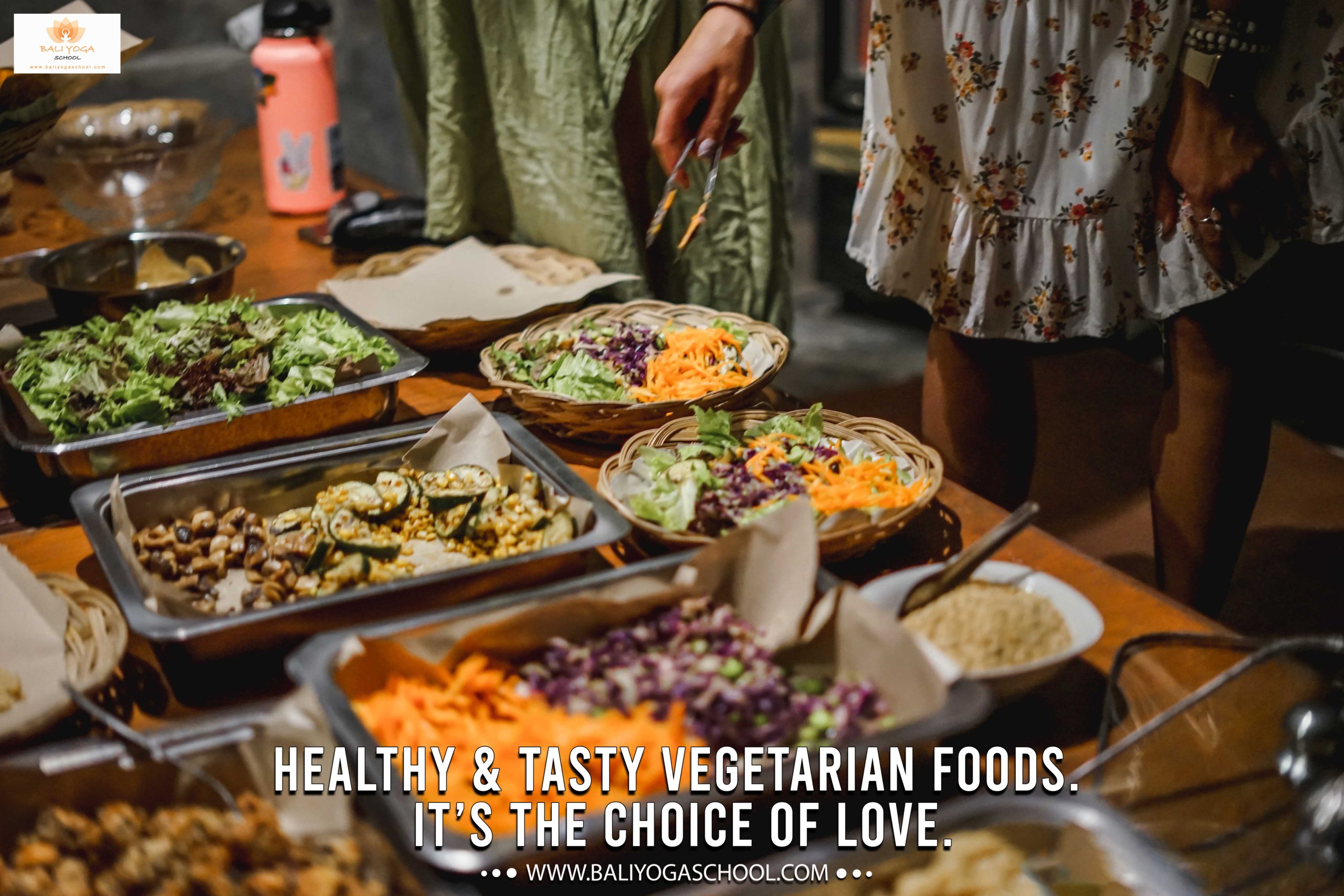The advantages of a healthy vegetarian diet for yogic living
By Himanshu JoshiYoga Teacher Traininghealthy food, yogic foodOne of the main reasons vegetarianism is preferred and recommended for yogic living is that it has a calming effect, in contrast to non-vegetarian or spicy foods, which are more stimulants. Food has a profound effect on our thoughts, and what you eat can have a direct effect on your mind. This could be supported by both contemporary science and traditional Yoga practice. Our cerebrum and gastrointestinal (GI) tract are strongly associated by what is known as gut-brain connection through which the two cooperate. Similar to how the gut can feel strong emotions like anxiety, fear, surprise, and happiness (have you ever heard of butterflies in the stomach?), healthy eating can make the bacteria in your gut happy, which is transmitted to the brain, which then makes happy hormones. The sattvik diet is based on a vegetarian diet, which provides the body and brain with the necessary vitamins, minerals, calcium, and antioxidants.

What is a satvic diet and how it fits into the yogic way of life?
In the yogic way of life, the sattvic diet is very important because it cleans the body and mind and gets people ready for advanced practice. A sattvik diet includes whole grains, milk, fresh and seasonal fruits and vegetables, as well as nuts, seeds, beans, and legumes. They are stacked with supplements required by the body.
Rajasic and tamasic foods
There are two different classifications of food according to the antiquated practice that are not viewed as fit for yogic lifestyle – rajasic and tamasic food sources. Some vegetables and herbs are not included in the sattvik diet. Refined sugar, tea and coffee, cigarettes, spicy and salty foods, junk food, eggs, onion, garlic, eggplant, radish, tomato, and junk food are all part of a rajasic diet, which may give you energy immediately after eating but soon depletes it, leaving you feeling low. A yoga practitioner shouldn’t eat tamasic foods because they make you dull, disconnected from yourself, and lethargic. Mushroom, onion, garlic, potatoes, old food sources, overripe food sources, unripe food varieties, consumed food, frozen food sources, liquor, drugs are a portion of the tamasic food sources which ought to be kept away from by those enthused about seeking after Yoga and look for a greater reason throughout everyday life.
What is a vegetarian diet and what are its advantages?
Vegetables and fruits, as well as dairy products like milk, curd, and paneer, make up the majority of a vegetarian diet. A vegan diet, on the other hand, restricts consumption to only plant-based foods and avoids dairy products like paneer, milk, and cheese. Almond milk, soy milk, tofu, and other dairy substitutes are popular with vegans.
Due to its numerous benefits for heart health, diabetes, and certain types of cancer, vegetarianism is becoming increasingly popular worldwide. Be that as it may, prepared ready-to-eat veggie lover food sources with a lot of sugar or salt, soaked fats or southern style veg food sources are not helpful for wellbeing and could cause harm to heart and increment hazard of different constant illnesses.
Every day-recommended vegetarian meals
Vegetables: Cauliflower, cabbage, spinach, carrot, broccoli, green peas, capsicum, beetroot, bitter gourd, and corn are all examples of green leafy vegetables.
Fruits: Oranges, blueberries, strawberries, apples, bananas, mango, guava, watermelon, muskmelon, kiwi, and avocado
Dairy: Milk, curd, paneer, cheddar, yogurt, ghee
Protein resources: quinoa, oats, brown rice, ragi, amaranth, buckwheat, corn, sorghum, and millets, quinoa, lentils, beans, paneer, cheese, nuts, and seeds
Nutritional information about a vegetarian diet: To get the most out of a vegetarian diet, it’s important to eat a lot of fruits and vegetables, legumes, and whole grains to get a lot of good nutrients to keep your heart, brain, hormones, and overall health in good shape.
Nourishment specialists prescribe adding heaps of varieties to the plate to expand the ambit of supplements you get from your food. You should regularly consume beetroot, tomatoes, apples, oranges, strawberries, cranberries, bell pepper, grapes, ridge gourd, kiwi, pineapple, and jamun, all of which are wonderful, colorful fruits and vegetables.
Vegetables can add the genuinely necessary fiber to the eating routine for backing out the absorption cycle and forestalling issues like obstruction. Cans of vegetables and fruits always taste better. Vegetables that have just been cooked should be consumed as soon as possible to maintain their nutritional profile and satvik guna.
Increase your intake of whole grains. Not all vegetarian foods are created equal. Potatoes, cereal, and rice have a lot of starch, but spinach, broccoli, and mustard have more calcium, iron, vitamin C, vitamin B6, and magnesium, among other nutrients. Wholegrains should be consumed more frequently, while starchy foods should be included in a balanced manner.
Dairy products
When following a vegetarian diet, it is essential to select the appropriate dairy products to ensure adequate intake of protein, calcium, vitamin A, and vitamin B12, among other nutrients. Milk, curd, and paneer that are low in fat can help reduce fat intake.
Lentils and pulses Like rajma, chickpeas, black gram, urad dal, chana dal, arhar dal, moong dal, and sprouted lentils, lentils and pulses are a good way to get the right amount of protein you need to make new cells and keep the ones you already have healthy.
Nuts and seeds Nuts and seeds, such as pumpkin seeds, chia seeds, cashew nuts, almonds, and pistachios, are stores of healthy fats, protein, fiber, vitamins, and minerals that you should consume on a daily basis.
What you eat equals to your thought process. Your eating regimen constructs your actual wellbeing as well as has incredible impact at the forefront of your thoughts and emotional wellness. As a result, it’s critical that we choose our food carefully. A satvic diet goes long way in keeping body and brain sound.






